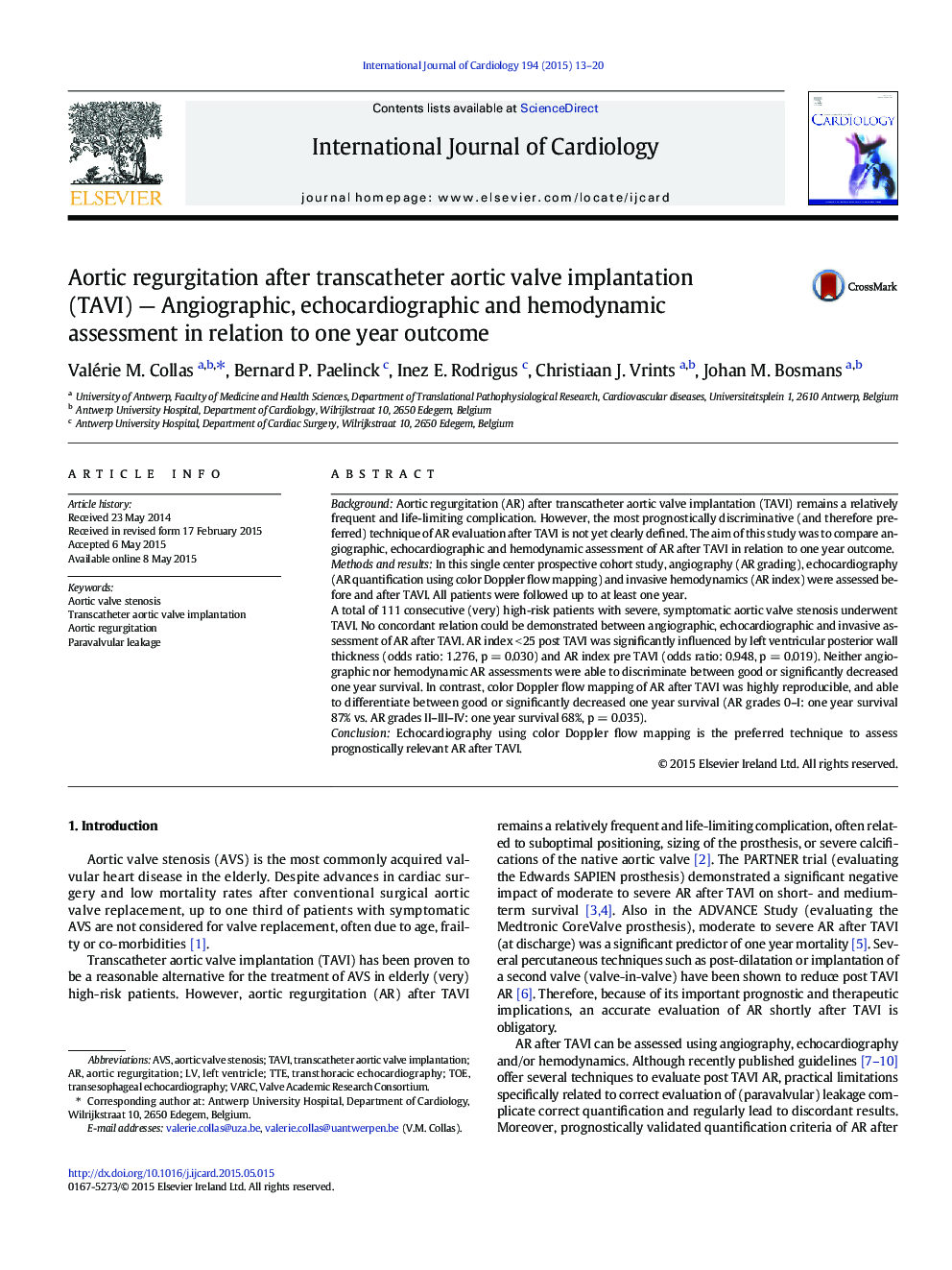| کد مقاله | کد نشریه | سال انتشار | مقاله انگلیسی | نسخه تمام متن |
|---|---|---|---|---|
| 5966515 | 1576158 | 2015 | 8 صفحه PDF | دانلود رایگان |

- We compared three modalities to evaluate aortic regurgitation (AR) after TAVI.
- Angiography, echocardiography and hemodynamics were not correlated.
- Echocardiography was highly reproducible.
- Only echocardiography was able to assess prognostically relevant AR after TAVI.
BackgroundAortic regurgitation (AR) after transcatheter aortic valve implantation (TAVI) remains a relatively frequent and life-limiting complication. However, the most prognostically discriminative (and therefore preferred) technique of AR evaluation after TAVI is not yet clearly defined. The aim of this study was to compare angiographic, echocardiographic and hemodynamic assessment of AR after TAVI in relation to one year outcome.Methods and resultsIn this single center prospective cohort study, angiography (AR grading), echocardiography (AR quantification using color Doppler flow mapping) and invasive hemodynamics (AR index) were assessed before and after TAVI. All patients were followed up to at least one year.A total of 111 consecutive (very) high-risk patients with severe, symptomatic aortic valve stenosis underwent TAVI. No concordant relation could be demonstrated between angiographic, echocardiographic and invasive assessment of AR after TAVI. AR index < 25 post TAVI was significantly influenced by left ventricular posterior wall thickness (odds ratio: 1.276, p = 0.030) and AR index pre TAVI (odds ratio: 0.948, p = 0.019). Neither angiographic nor hemodynamic AR assessments were able to discriminate between good or significantly decreased one year survival. In contrast, color Doppler flow mapping of AR after TAVI was highly reproducible, and able to differentiate between good or significantly decreased one year survival (AR grades 0-I: one year survival 87% vs. AR grades II-III-IV: one year survival 68%, p = 0.035).ConclusionEchocardiography using color Doppler flow mapping is the preferred technique to assess prognostically relevant AR after TAVI.
Journal: International Journal of Cardiology - Volume 194, 1 September 2015, Pages 13-20